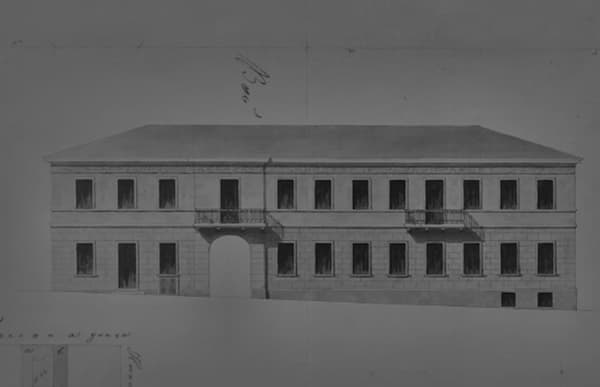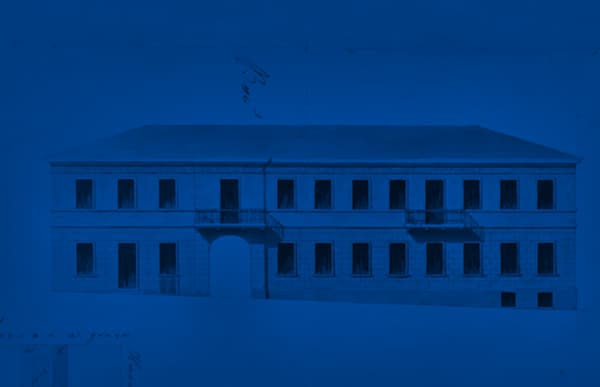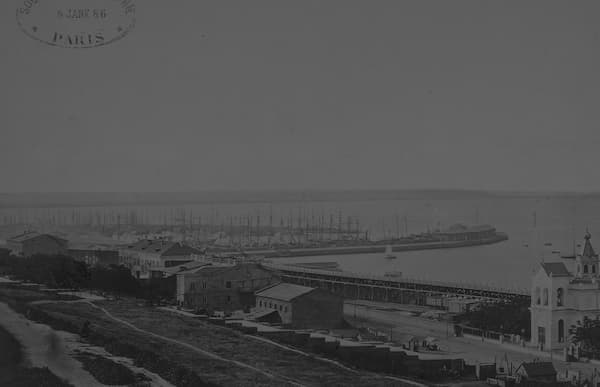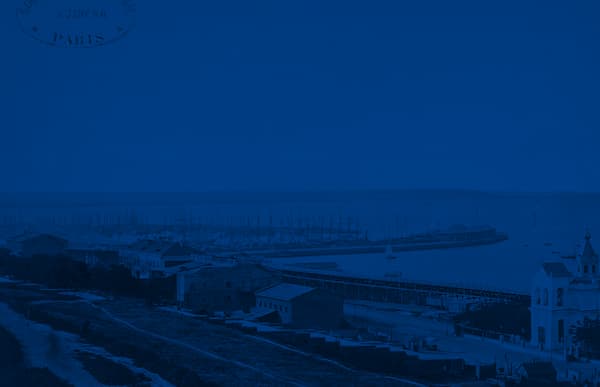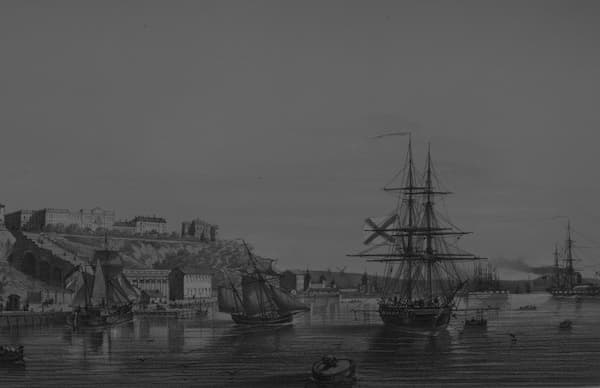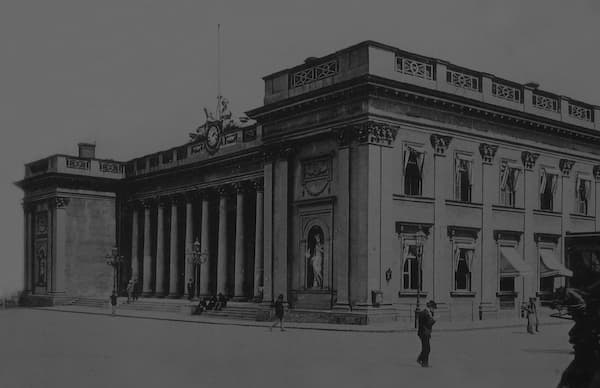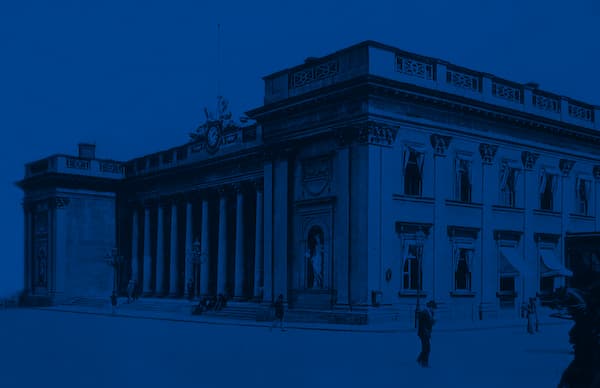Francesco Frapolli (1771-ante 1819)
Often considered by Ukrainian and Russian literature to be a native of Naples (not unlike his younger brother Giovanni Battista), Francesco Frapolli descended from a family originally from Scareglia in the Val Colla. Archival investigations carried out in 2025 by Iryna Balmeli were able to ascertain that this branch of the Frapolli family had been settled at least since 1738 in Massagno, on the hill to the west of Lugano, where in 1827 his sister Maria was still living (BSSI 1949, p. 49). And it was precisely in Massagno that Francesco Frapolli, son of Giuseppe Antonio Frapolli (1745-1797) and Maria Margherita Luchini di Gentilino, was born on 22 July 1771 (Lugano, Archivio Diocesano, Registri parrocchiali).
The beginning of his activity in Odesa dates back to the last years of the 18th century. According to some sources, Francesco Frapolli was employed in 1795 with a three-year contract as the architect of the Office for the Construction of the Southern Fortresses and the Port of Odesa (Michajlova 2008, p. 208), while for others Frapolli worked from 1798 onwards in the Committee for the Construction of the Port and the City, designing and realising, under the direction of the engineer François Sainte de Wollant (1752-1818), the port infrastructure, including the salt and admiralty warehouses, the customs house and the arsenal, which have now been lost (Piljavskij 2010b, p. 15).
However, the core of his activity coincided with the building initiatives promoted by Armand-Emmanuel du Plessis, Duke of Richelieu (1766-1822), governor of Odesa from 1803 to 1814. Between 1804 and 1809, Francesco Frapolli directed the construction of the Municipal Theatre and the Municipal Hospital, designed by Jean-François Thomas de Thomon, then one of the leading architects working in St. Petersburg, to which he made several changes to adapt them to the context and demands of the local clientele. During the same period, he took part in the construction of the Cathedral of the Transfiguration, originally dedicated to St Nicholas, the city's patron saint, and designed and built the Church of the Trinity (1804-1808) for the Greek community, today at 55 Ekaterininska Street, modified in 1841 according to Giorgio Torricelli's designs and later by further reworkings. The work carried out according to his plans in the Greek Bazaar and the New Bazaar dates back to the 1810s.
Francesco Frapolli was also the author of numerous private residences, in which he reworked the model-projects sent from St. Petersburg, introducing “generous porticoes and wide galleries, which were well suited to the climatic characteristics of the region” (Michajlova 2008, p. 209).
In Odesa, Frapolli resided with his wife Maria Adelaide, by whom he had at least one daughter, Vittoria, who married Paolo (Pavel) Marini (1798-1849), illegitimate son of Count Viktor P. Kochubey, a state councillor and member of the board of the Institute of Noble Maidens (Lugano, Archivio storico, Cotti 9b/78, 79; Batsak 2004, pp. 154, 246). Regarding his date of death, printed sources vary between 1817 (e.g. Piljavsky 2010, p. 244) and 1819 (Kilesso 2021).
The work carried out in Odesa by the Frapolli brothers awaits clarification through new investigations that will enable the catalogue of their works to be established and shed light on their training and experience prior to their arrival on the shores of the Black Sea.
Bibliographical sources
_ “Bollettino Storico della Svizzera italiana”, series IV, y. XXIV, 1949, n. 1, p. 49.
_ A. Crivelli, Artisti ticinesi in Russia. Catalogo critico, Locarno 1966, p. 59.
_ V.I. Tymofijenko, Zodči Ukraïny kincja XVIII-počatku XX stolit’, Kyïv 1999.
_ K. Batsak, Italiiska emihratsiia v Ukraini naprykintsi XVIII - u pershii tretyni XIX stolittia, Znannia Ukrainy, Kyiv 2004.
_ M.B. Michajlova, Architetti italiani e ticinesi a Odessa nella prima metà dell’Ottocento, in P. Angelini, N. Navone, L. Tedeschi (eds.), La cultura architettonica italiana in Russia da Caterina II a Alessandro I, Mendrisio 2008, pp. 207-218.
_ V. Pilavski [sic], Architecture d’Odessa 1794-1924, in M.P. Vial (ed.), La Mémoire d’Odessa, catalogue of the exhibition (Marseille, La Vieille Charité, June-September 1989), Paris 1989, pp. 41-79.
_ V.A. Piljavskij, Zdanija, sooruzhenija, pamjatniki Odessy i ich zodčie, Odessa 2010, passim and pp. 244-245.
_ V.A. Piljavskij, Zodčie Odessy. Istoriko-architekturnoe očerki, Odessa 2010, pp. 17-19.
_ S.K. Kilesso, Frapolli, Francesco, in Allgemeines Künstlerlexikon Online, Berlin 2021 (p. accessed on 5.5.2022).
Nicola Navone with the collaboration of Iryna Balmeli
Version of: 01.07.2022, updated on 18.02.2025
